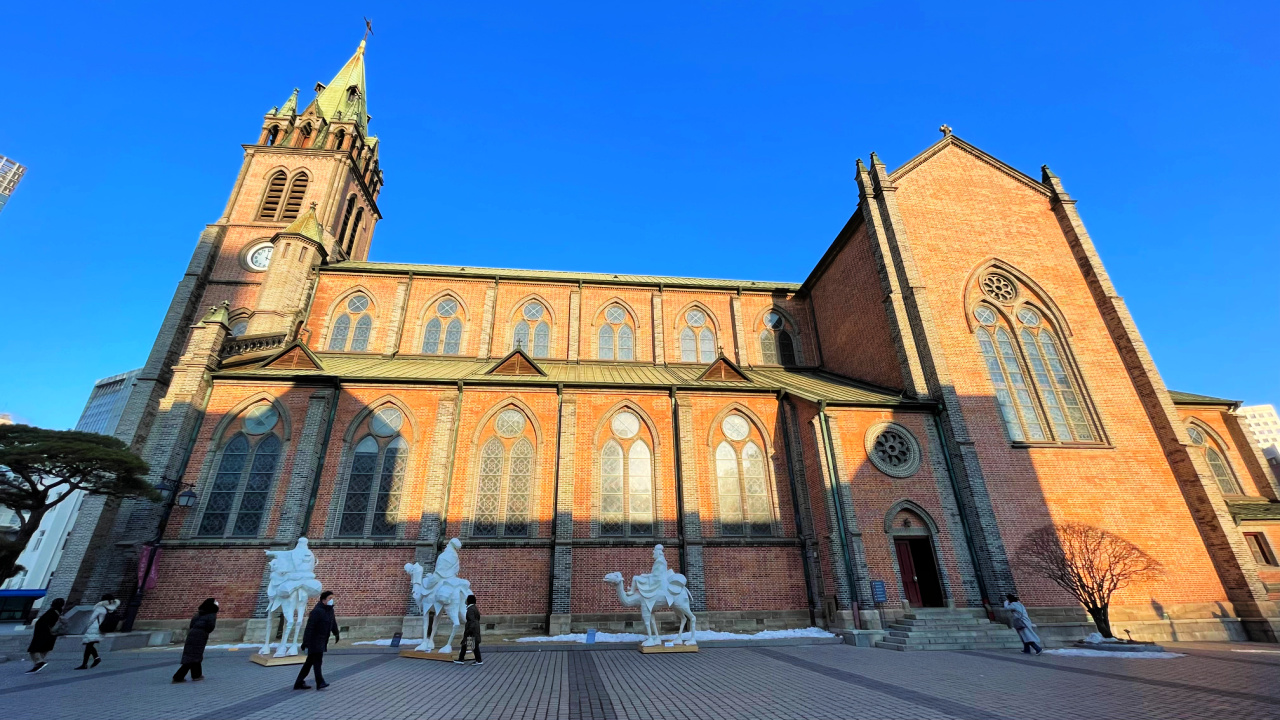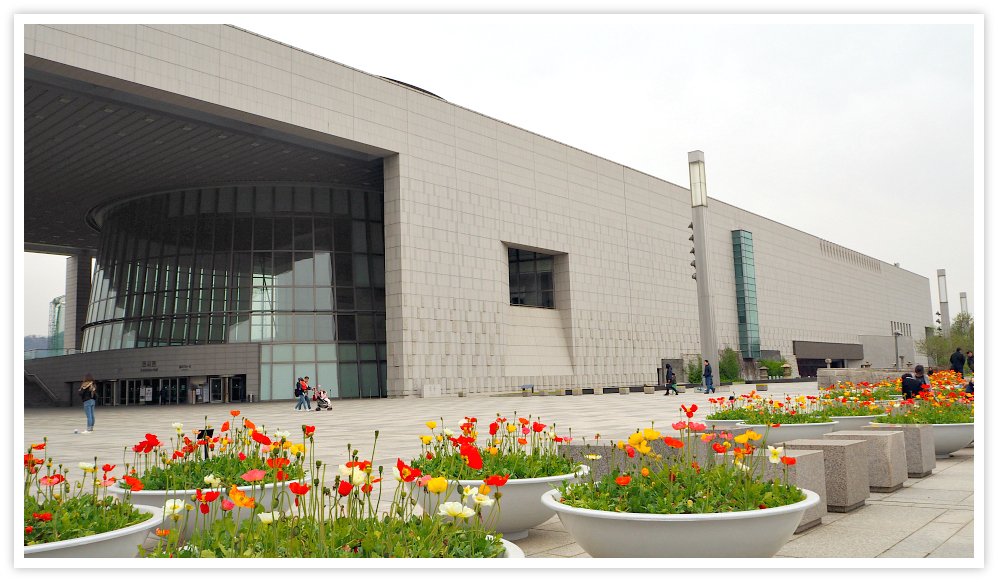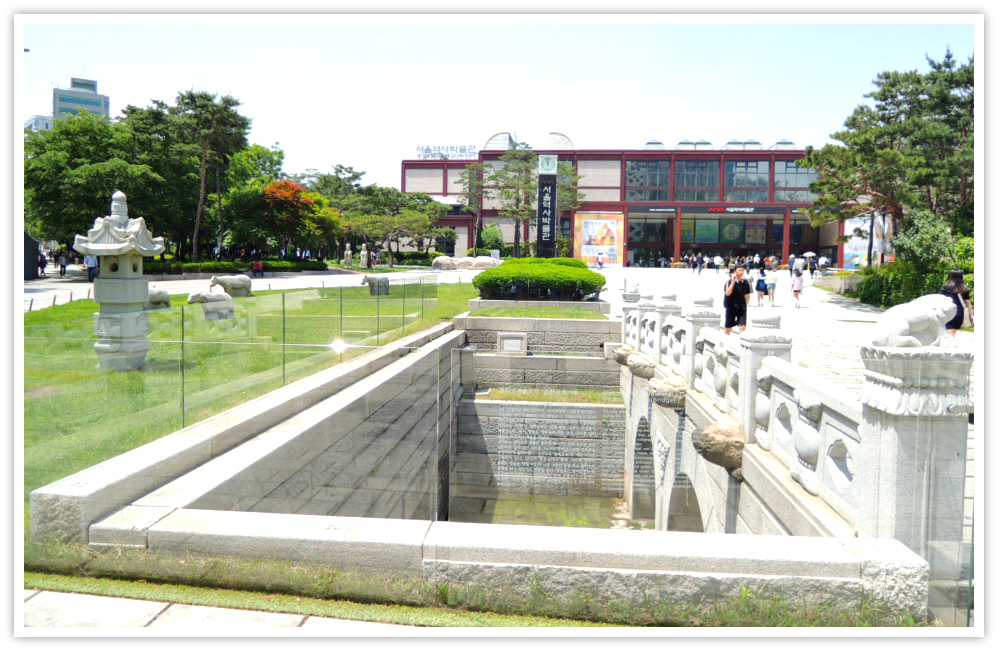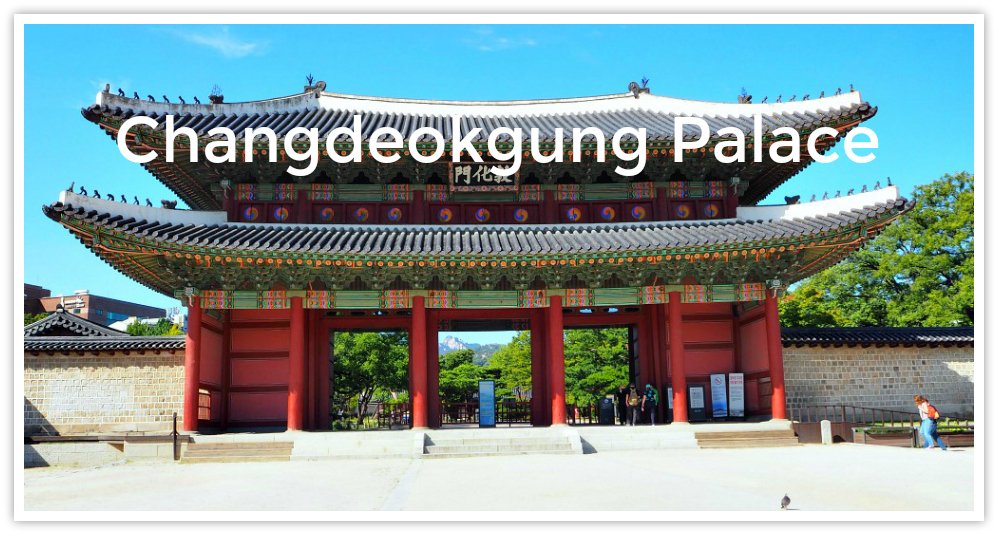Amazing Myeong-dong Cathedral
 Sideview of Myeong-dong Cathedral showing its Gothic structure
Sideview of Myeong-dong Cathedral showing its Gothic structureAmazing Myeong-dong Cathedral
The amazing Myeong-dong Cathedral, located in the heart of downtown Seoul, South Korea, is a popular tourist destination and one of the oldest churches in the country.
Built in 1898 and recently renovated, Myeong-dong Cathedral is considered by many to be an architectural masterpiece with its neo-Gothic style design. The large stained glass windows that line the interior walls create a beautiful atmosphere for visitors to enjoy.
Inside the church, visitors can find numerous memorials dedicated to Korean martyrs as well as contemporary works of art. Visitors can explore all the church's features during their visit and take part in religious services such as Sunday Mass or confessionals held daily.
 Myeong-dong Cathedral's Description Board
Myeong-dong Cathedral's Description BoardWhether exploring this grand cathedral's features or simply taking in its beauty, Myeong-dong Cathedral is sure to offer visitors a unique experience.
Myeong-dong Cathedral also stands as an important cultural center for the city of Seoul. The church holds regular events, such as seasonal concerts and spiritual activities, that bring the community together.
Additionally, the church serves as a home for many charitable organizations that benefit those in need. With its impressive architecture and a strong sense of community, Myeong-dong Cathedral is essential to downtown Seoul's culture and history.
Visiting this beautiful cathedral is sure to be a rewarding experience for anyone who takes the time to explore it.
 Diagonal view of the Cathedral
Diagonal view of the CathedralHistorical Background
Myeong-dong Cathedral was first built in 1898 by French missionaries and was constructed using a neo-Gothic style.
Over the years, it has served as an important center for Catholicism in South Korea and has been witness to much of the country's turbulent history.
During the Japanese occupation of Korea from 1910 to 1945, Myeong-dong Cathedral continued to hold regular Christian services; however, its activities were heavily restricted during this time.
Following liberation in 1945, Myeong-dong Cathedral faced another period of difficulty when anti-religious sentiment arose during the Korean War (1950–1953). Despite these trials, the church remained open and held continuous religious services until its renovation in 1976.
Since then, Myeong-dong Cathedral has become one of the most recognizable landmarks in South Korea and continues to serve as an essential center for Catholicism.
Today, visitors can take part in various religious services at Myeong-dong Cathedral, such as Sunday Mass and confessionals held daily.
The church also serves as a cultural center for the city of Seoul, hosting numerous concerts and spiritual activities throughout the year.
Whether it's exploring its impressive architecture or taking part in its religious ceremonies, visiting Myeong-dong Cathedral is sure to be an unforgettable experience.
 View of the Cathedral with the LED flowers in the foreground.
View of the Cathedral with the LED flowers in the foreground. People crisscrossing between the Cathedral and the church's cultural centre
People crisscrossing between the Cathedral and the church's cultural centreInterior of the Cathedral
Inside Myeong-dong Cathedral, visitors can admire its impressive neo-Gothic style architecture.
The large stained glass windows line the walls and create a beautiful atmosphere for visitors to enjoy.
Additionally, there are numerous memorials dedicated to Korean martyrs as well as contemporary works of art adorning the interior.
Visitors will also find an abundance of religious paintings, holy objects, and statues that add to the church’s unique charm.
Finally, the grand altar at the heart of the cathedral serves as a reminder of its enduring religious significance in South Korea. All these features combine to make Myeong-dong Cathedral a truly special place with an unforgettable atmosphere.
 Wide angle and front view of Myeongdong Cathedral
Wide angle and front view of Myeongdong CathedralStained Glass Windows
The stained glass windows at Myeong-dong Cathedral are some of its most striking features. These beautiful works of art feature biblical scenes as well as depictions of prominent Korean martyrs, making them a highlight for many visitors to the church.
The vivid colors and intricate designs bring a sense of awe to those who take the time to appreciate them, creating a truly spiritual atmosphere inside the cathedral.
Additionally, these windows help to add an element of grandeur and beauty to the overall architecture of Myeong-dong Cathedral, making it even more unforgettable for visitors.
All in all, these stunning stained glass windows are just one more reason Myeong-dong Cathedral is worth visiting.
 Myeong-dong Cathedral's view from its entrance area
Myeong-dong Cathedral's view from its entrance areaReligious Significance
Myeong-dong Cathedral has been an essential center for Catholicism in South Korea since it was first built in 1898.
Each year, thousands of people come to attend services such as Sunday Mass and confessionals held daily.
Additionally, the church serves as a spiritual refuge for those who seek solace in its sacred atmosphere. Besides its religious significance, Myeong-dong Cathedral is also an essential part of the city's cultural history, having witnessed much of South Korea's turbulent past.
Because of this long and rich history, many consider Myeong-dong Cathedral to be a national treasure and an essential part of the country's cultural identity.
All these factors make Myeong-dong Cathedral an exceptional place worth visiting for its religious and historical significance.
 Myeongdong Cathedral's Cultural Center
Myeongdong Cathedral's Cultural CenterThe Crypt
The Crypts of Myeong-dong Cathedral are also worth noting. They contain the remains of Korean martyrs and notable figures who fought for religious freedom in the 19th century.
By paying homage to these important figures, visitors can better understand South Korea’s history and its journey toward democracy.
Visiting the crypts is an opportunity to reflect upon the sacrifices made by many brave individuals who dedicated their lives to protecting their faith and fighting for progress in their country.
Exploring the crypts helps visitors appreciate this long and complicated history while gaining a deeper appreciation for Myeong-dong Cathedral itself. All these factors make visiting Myeong-dong Cathedral an unforgettable experience.
Grotto of Our Lady of Lourdes
The Grotto of Our Lady of Lourdes is also an essential feature of Myeong-dong Cathedral, located at the back of the chapel.
It is a replica of the famous French grotto, which is said to have been visited by Mary, the mother of Jesus.
Visitors can find statues and artwork related to the Virgin Mary on display here as well as several items related to her life such as rosaries and handkerchiefs.
The grotto provides visitors with a more intimate connection to faith and spirituality, which is why it continues to be an essential part of Myeong-dong Cathedral.
By taking time to appreciate this unique space, people are able to feel closer to God while acknowledging His role in South Korea’s history and development. All these features make Myeong-dong Cathedral a truly unique place that is worth visiting.
Statue of Our Lady of the Immaculate Conception
The Statue of Our Lady of the Immaculate Conception is also notable at Myeong-dong Cathedral.
The statue was built in 1908 and served as an important reminder of the dedication of the Catholic Church to religious freedom in South Korea.
The majestic statue stands at the center of the courtyard and is surrounded by gardens, making it easy to appreciate its beauty and detail.
By taking time to admire the statue, visitors can gain a greater understanding of South Korean history while feeling spiritually connected to all that has been done in the name of faith.
This beautiful monument is just one more reason why Myeong-dong Cathedral remains an essential part of South Korea’s cultural heritage.
In conclusion, Myeong-dong Cathedral is a significant religious and historical site in South Korea.
From the awe-inspiring stained glass windows to the crypts of Korean martyrs and the Grotto of Our Lady of Lourdes, there are many exciting features to explore at this cathedral.
Additionally, it serves as an essential reminder of South Korea’s journey toward freedom and democracy, making it an unforgettable experience for any visitor. For all these reasons, Myeong-dong Cathedral should not be missed on any trip to South Korea.
- Home
- Seoul Attractions Best
- Myeongdong Cathedral
Get Exciting Activities
Book one of our exciting activities today to experience the thrill of a lifetime! Take advantage of this opportunity and secure your spot in advance.
Hotel Map Guide
Find your affordable, accessible, and comfortable hotel in Seoul at Agoda.Com. See the hotel map below...
Hotel Booking Guide
Find affordable and amazing hotels on Agoda.com using the search box below. Book now to enjoy great discounts and save!







New! Comments
What do you think about this page? Leave me a comment in the box below.